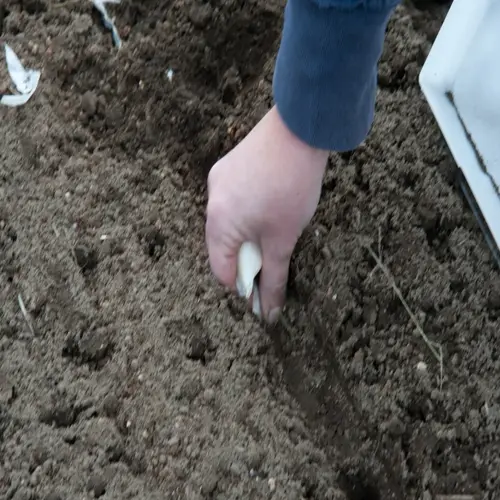How do you protect lettuce from pests?

Written by
Paul Reynolds
Reviewed by
Prof. Samuel Fitzgerald, Ph.D.Safeguarding lettuce from common pests means using organic methods that do not affect your harvest. Slugs and snails consume young seedlings overnight, and aphids group up underneath leaves and extract the juices from the plant. Birds will also munch on young seedlings. Apply prevention methods immediately after planting. I use row covers as the first line of defense from flying insects and birds. It creates a physical barrier to establish a safe space for seedlings.
Slug and Snail Control
- Apply iron phosphate bait at dusk when pests are active
- Create copper tape barriers around beds to repel them
- Set beer traps in shallow containers overnight
- Handpick during evening hours with flashlight
Aphid Management
- Spray soapy water solution (2 tsp soap per quart water)
- Introduce ladybugs which consume 50+ aphids daily
- Use strong water spray to dislodge colonies
- Plant companion flowers like marigolds to deter infestations
Install physical barriers as soon as you plant them in the ground. Floating row covers can be used to prevent egg-laying insects from reaching plants. Edges should be weighed down with soil or stones. For birds, strips of reflective tape can be placed over beds, and you can also use bird netting that has been secured tightly at ground level. These options create immediate protection zones. Be sure to check barriers regularly for gaps or damage.
Combat slugs with iron phosphate bait. Cast the pellets to the plants at dusk when the slugs are active. The bait will dehydrate them in a few days. Copper tape creates an electrical barrier to deter slugs. Combine this with a beer trap buried to the rim. These remedies are most effective when used routinely throughout moisture-laden seasons.
To control aphids, use soapy water sprays in the early morning. Spray the undersides of the leaves thoroughly. Release ladybugs in the evening, when it cools down. Plant some nectar-abundant flowers nearby to support beneficial insects. When the infestation is severe, cut off the infected leaves and dispose of them. Never spray oils when it is hot, to avoid leaf burning.
Safeguard against future infestations with garden sanitation. Remove plant debris in which pests overwinter. Rotate lettuce beds annually. Space plants for airflow. Irrigate soil, not the leaves, to prevent fungal diseases harming plant health. Healthy lettuce plants are better at naturally avoiding pest damage than stressed plants.
Read the full article: When to Plant Lettuce: Ultimate Growing Guide
